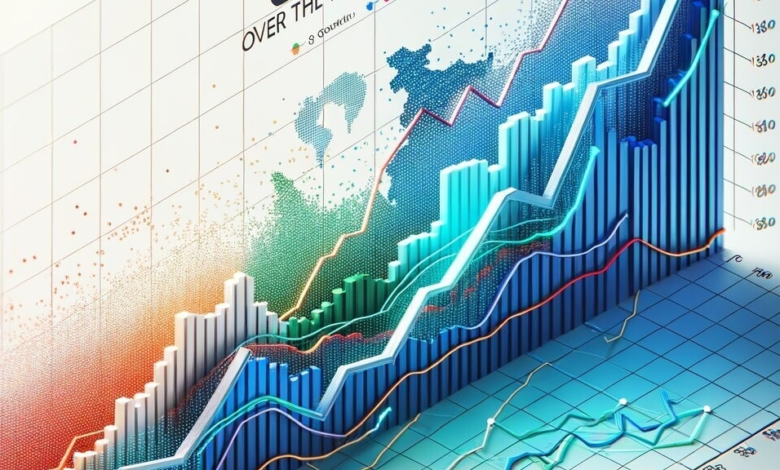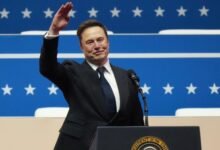GDP growth pegged at 6.4% in FY25, dims prospects for FY26

The economy is seen to grow at 6.4% this fiscal as per the first advance estimates of national income released on Tuesday, dimming growth prospects for FY26 as well and raising fresh concerns for policymakers who are in the midst of working out the proposals for the Union Budget 2025-26.
While private consumption is seen to have made a sharp rebound and is estimated to grow 7.3% this fiscal, the challenges of private investment demand as well as subdued government spending are expected to continue for the remaining months this fiscal. Experts have also flagged risks from global uncertainties extending into FY26 as well.
As per the estimates released by the Ministry of Statistics and Programme Implementation, gross value added (GVA) has grown by 6.4% in FY 2024-25 over the growth rate of 7.2% in FY 2023-24. Nominal GVA has shown a growth rate of 9.3% in FY 2024-25 as compared to the growth rate of 8.5% in FY 2023-24.
“The lower GDP growth for FY25 has been the result of a cyclical slowdown in the Indian economy in the past three quarters. Apart from that, some of the factors affecting growth were strong base effect, general elections, weak private sector capex and monetary and fiscal tightening,” said Paras Jasrai, Senior Economic Analyst at India Ratings and Research.
While agriculture is seen to have grown by 3.8% this fiscal, mining and quarrying is forecast to grow by 2.9% and manufacturing by 5.3% this fiscal. Amongst sectors, the fastest growth is estimated in public administration, defence and other sectors at 9.1% this fiscal, followed by 8.6% in construction and 7.3% expansion in financial, real estate and professional services.
Private consumptions pick up, investments remain slow:
However, the pick up in private final consumption expenditure at 7.3% this fiscal from 4% in FY24 is seen as the silver lining in the data, especially with rural consumption seeing a recovery after the good monsoons.
Dharmakirti Joshi, Chief Economist, Crisil said the anticipated decline in food inflation will support discretionary spending, particularly among low-income households with a higher proportion of food in their consumption basket. He however, pointed out that the urban economy is grappling with the dual challenge of high inflation and slowing credit growth.
Private sector investment has however, remained sluggish despite various measures rolled out. Gross fixed capital formation is estimated to grow by 6.4% in FY25 from 9% last fiscal.
FY26 growth prospects dim, more measures needed:
Most analysts expect growth to remain at less than 7% in FY26 as well. “We project the Indian economy to expand 6.7% next fiscal in the base-case scenario, underpinned by public infrastructure spending, lower crude oil prices, normal monsoon and monetary easing. That said, policymakers must remain vigilant in the face of escalating geopolitical and climate risks,” said Joshi.
Aditi Nayar, Chief Economist and Head – Research & Outreach, ICRA projected GDP growth in FY26 at 6.5% based on an anticipated capex push in the upcoming Budget. “In our view, the GDP growth in FY2026 will be crucially influenced by global uncertainties as well as domestic uncertainties, amidst considerable base effects,” she noted.
She also noted that while MOSPI’s implicit H2 FY2025 projections seem reasonable, some of the sectoral numbers could report higher growth prints in H2 FY2025. For instance, the growth rates for the mining, manufacturing and trade, hotels and transport segments are likely to exceed the assumed rates, given the dissipation of the adverse impact of excess rains that impacted growth in Q2 FY2025, the anticipated uptick in rural demand, and favourable base effect in some segments. “Similarly, on the expenditure side, GFCF growth is likely to turn out to be higher than the NSO’s implicit estimate of 6.4% for H2 FY2025, amid expectations of a pick-up in government capex and some improvement in private capex activity, which were adversely impacted owing to the elections in H1 FY2025,” she said.
Experts also called for continued measures by the government to sustain the growth momentum.
DK Srivastava, Chief Policy Adviser, EY India said the government would do well to continue to emphasize infrastructure expansion as the core of its growth strategy in the presence of continuing global uncertainties.
Suman Chowdhury, Chief Economist and Executive Director, Acuité Ratings & Research said a sustained domestic demand revival, however, will be the key to 7%+ growth over the medium term.
https://akm-img-a-in.tosshub.com/businesstoday/images/story/202501/677d258c4ac17-indian-gdp-slow-070054484-16×9.png







